#oc: artichoke
Text

(Please click for better quality)
#he came out of a snake's egg that was hatched by a dog#his name is artichoke (arti for short)#art#my art#chimera#dog#ink#watercolor#sketchbook#oc: artichoke#original character#original art
19 notes
·
View notes
Text

Sparkle on!
i can draw a full OC, no problem. this is Wires. His name.... his name is Wires, believe it or not, he cogs are mostly decorative (they used to be very fashionable. They're not anymore, but he thinks they look good on him). He is nice, mellow, a good listener. However, you are to not, under any circumstance, let him hug you, though, he WILL touch your ass. but other than that, he's pretty harmless. weird uncle vibes. you can see his new shirt below

#i feel like his alt-mode is a shitty old car that would be posted on shitty car mods bc the cogs ARE visible through the hood#the steady decline of quality. full-body wires that i like. close up wires that looks janky. little wires with his new shirt on. and then#artichoke boy#transformers OC#don't click for quality. there's none. im taking screenshots on the oldest computer in the world. just fill in the blanks will you#dont think too much about wires he was originally a random side-character i'd use for my daydreams. an NPC if you will#but i love him now
27 notes
·
View notes
Text

Artichoke girl :3
#I love her so much#she’s a cheer leader !!#artichoke#girl#cute girl#girl art#oc#original character#oc lore#my art
5 notes
·
View notes
Text

new ocs!
these are Aero and Lizzine, a duo of pals. practically attached at the hip, these two met as kids in the SB paralympics, where they bonded almost instantly. Aero has a prosthetic wooden arm and Lizzine has a stretchy rubber leg, both from disabilities they've had since birth. Lizzine has a bit of a curved mouth.
they mostly do sports-related stuff for fun, but they also have a variety talkshow podcast!
fanart and head canons of any sort are EXTREMELY welcome!
#storybots#storybots answer time#storybots fanart#my ocs#for the hell of it#they really said SPOOOOOOORTS#also they're missing limbs#but they're awesome#aero artichoke#lizzine lakehureon
15 notes
·
View notes
Text

she's ok she's just taking a nap everything is finee
#oc art#as always i gaslight myself into thinking i enjoy drawing hands before starting anything. but it's a lie.#i don't. i'm just very good at convincing myself i do#not finished yet but i'm getting tired and i'm not sure if i'll ever do more than this section so i'm putting this here anyway etc etc#you know the drill by noww anyway x2. good night#luminescence#.artichoke#if you saw the version of this where the cursor was still visible right in the middle of it no you didnt
2 notes
·
View notes
Text

doodlin around
2 notes
·
View notes
Text


2023 vs 2018 Cornucopia Zephs. I have been wanting to redraw this older picture of my oc for a while. He has god powers that can make stuff out of nothing so horn-a-plentys suit him well.
#my art#my ocs#something still not quite right with this zeph too.. maybe i'll approach the prompt again in a few years so i can be happy with it#now his fruits and veggies look more yummy i even gave him a nice artichoke
4 notes
·
View notes
Text
got inspired by @fatal-rewrites-warriors ‘s interaction drabbles so I’m stealing their idea and writing some for my own cats!
here’s the first one for the two brown furred sisters Chestnutfur and Ratclaw!
The soft, yet familiar sound of clacking beads was what woke Ratclaw up this time. The warm Golden Moon sun shone through the hole in the roof of the second warriors den, warming the rocks and sand and blinding any warrior who faced it directly.
Ratclaw could hear her sister shuffling about as she continued beading whatever necklace or bracelet she was making. Quietly grumbling, she lightly pawed at her sister’s nest. “Chestnut ‘s nap time…go back to sleep..” Chestnutfur lightly swatted at Ratclaw’s paw before going back to stringing the beads onto the necklace she was making. “Sorry Ratclaw but no napping right now for me. I gotta keep my paws busy.” She said quietly, quite lost in thought. Ratclaw rolled over sleepily to face her sister. “Yeah well I need to keep my paws busy too, but you don’t see me doing it during nap time.” She stated, playfully batting at the necklace Chestnut was making. Chestnutfur hissed and swiped at her paw, but there was no malice behind it, only mild irritation. “Yeah well, I don’t hunt all the time and teach classes like you do. Stop being annoying. I love you, but stop being annoying.” she hissed, not looking at Ratclaw and instead opting to focus on the necklace.
“What are you making?” Ratclaw asked, already knowing the answer. She leaned in close, peeking over her sister’s shoulder to watch her string on the colorful beads and shells onto the woven string. “I’m remaking Ferndawn’s necklace. He broke it recently while out gathering building supplies.” She stated, beginning to tie the ends of the string together. “How’s he been doin’? His sisters? There’s so many damn cats here in Shell Colony that I don’t see them everyday like you.” Ratclaw knew that it was entirely possible that her sister hadn’t seen her kits at all that day, with them being adults with their own jobs in the colony. “They’re all doing good. Kestrelwater has been out exploring, Twigswoop has been out running around and finding me extra supplies, Yarrowspeck has been helping out mom and Dustspot with herbs, and Ferndawn has been helping out Larch with teaching Artichoke about crafting. Wasn’t Artichoke originally training with you for hunting?” Chestnutfur was idly fidgeting with the beads of the necklace, almost as if contemplating if she should add anything else to it for her son. “Yeah well, Artichoke didn’t think that hunting was right for her. It's fine with me as long as she’s happy with whatever she does with her life. But that’s good! With your kits, that is. I'm glad they’re doing alright.” She said, claws digging into her nest at the mention of her former trainee. She really didn’t want to talk about her former trainee right now.
“You should sleep.” Ratclaw stated, attempting to change the conversation topic. “I will eventually, but not right now. I still need something to occupy my paws. Might just steal the feathers tied to your tail to repaint them.” Chestnutfur joked. “Well I don’t know about you, but I’m going back to sleep.” She said, curling up in her nest and resting her paws over her muzzle. “Sleep well sis. Love you.”
#If you can’t tell Ratclaw is a Mentor and Chestnutfur is a Crafter#Hope you don’t mind the tag Fatal I just thought you’d like it#Ratclaw kinda blames herself for Artichoke changing her career path to be a Crafter and doesn’t really like talking about it#Ratclaw absolutely adores her nieces and nephew but like she said there’s a lot of cats in Shell Colony#There’s 93 living cats in Shell Colony so camp is absolutely massive#Poor Podthroat (their mom) and Dustspot the colony healers are absolutely swamped with how many cats there are#But Ikeleg Goldjump and Clovertusk all help out#Project Beach Colonies#Shell Colony#Ratclaw#Chestnutfur#Warrior cats ocs#Edit: the reason why there’s so many cats in Shell Colony is because I made all the Colonies in clan gen#and Shell Colony was the one that got the biggest
4 notes
·
View notes
Text

Terror of the Golem Maid
The characters in the illustration are OCs created by me, the order was commissioned by artichoke
#art#originalcharacter#monster girl#monster maid#creature design#maid#vampire girl#aracne#scalie#golem#horror films
70 notes
·
View notes
Text
A Recipe for Daropaka and a Korithian Meal

Hello everyone! (More than) A few days ago I said that, as a way to celebrate reaching 200 followers that I would make one of the dishes from the setting of my WIP. I did something similar for 100 followers which you can see here. This time around I put up a poll to see what dish you all would like to see based on the favorite dishes of my OCs. You voted for Otilia's favorite food, a cheesecake (Daropaka) from the land of Korithia.
However because I felt a bit bad about how long it took me to get to this and because I needed to make something for dinner anyway, I prepared an entire Korithian meal, specifically the last dinner Otilia ate before she left her homeland.
I will give a short description and some history for each component of the meal and will also provide recipes. These recipes come specifically from the Korithian city-state of Kalmanati.
BIG POST ALERT

The diet of Korithians is highly reliant on cereals, grapes, and olives. Barley is the most commonly consumed cereal and is used in the bread of most commoners. However, Kalmanati is famed for the quality of its wheat, and particularly among the wealthy, wheat is the cereal grain of choice. Legumes (Lentils, peas, vetch, beans, etc), vegetables (Cabbage, carrots, lettuce, seaweeds, artichokes, asparagus, onions, garlic, cucumber, beets, parsnips, etc.) and fruits/nuts (pomegranate, almond, fig, pear, plum, apple, dates, chestnuts, beechnuts, walnuts, rilogabo(Kishite regalu "Sunfruit"), bokigabo (Kishite botagalu "Northern fruit), etc.) also make up a significant portion of the Korithian diet, with meat (Cattle, lamb, pig, goat, goose, duck, horned-rabbit, game) and fish typically filling a relatively minor role except for in the diets of wealthy individuals (like Otilia).
Vinegar, oil, and garlic appear in almost all Korithian dishes and are an essential aspect of the Korithian palate.
Recipes below the cut!
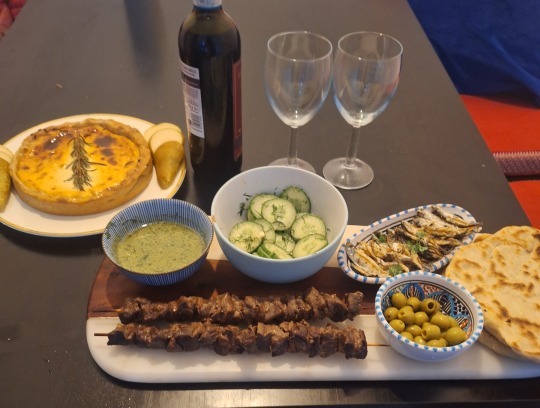
The components of the meal are as follows:
Daropaka: (Korithian: Daro = cheese, paka = cake)
Karunbarono: (Korithian: Karun = meat, baro = fire (barono = roasted) )
Pasrosi Diki: (Korithian: Pasrosi = fish(es), Diki = small)
Psampisa : (Korithian: Psamsa = bread, episa = flat)
Akuraros : (Korithian: Akuraros = cucumber)
Ewisasi : (Korithian: Ewisasi = olives)
Funemikiwados: (Korithian: Funemiki = hill (mountain diminutive), wados = oil/sauce)
Wumos: (Korithian: Wumos = wine)
Daropaka aka Awaxpaka aka Korithian Cheesecake
Daropaka is a popular dessert in Korithia, however its origins predate Korithia by several thousand years.
The dish originates from a race of forestfolk living on the Minosa, known as the Awaxi. The Awaxi were a tall and powerful race, some rivaling even demigods in size. Aside from their size the Awaxi were also easily identifiable by the third eye which sat on their forehead and the porcupine like quills which grew from their shoulders, sometimes called the Awaxi mantle.
The Awaxi were a primarily pastoralist civilization, living in small semi-temporary communities where they raised cattle and goats. They are credited with inventing cheese.
The first humans that the Awaxi came into contact with were the Arkodians. The Arkodians introduced the Awaxi to metallurgy, and in exchange the Arkodians were given knowledge of the cheesemaking process. This early form of cheese was called darawa (Korithian: Daro) and was typically made from cow's milk and vinegar, the resulting cheese being soft and crumbly, similar to a ricotta.
Unfortunately peace would not last. The Awaxi settled disagreements and debates often through duels, rather than through war. While quite skilled duelists, their culture had no reference for strategy in battle and lacked the proper skills to fend off the organized assault from imperialistic Arkodians. The Awaxi were eventually driven to extinction, though they still appear as monsters in Korithian myth.
The Arkodians themselves would later fall, destroyed by the Kishites, however many of their recipes, including their recipe for cheesecake, would be passed down to their descendants, the Korithians.
Recipe
(Note that Korithia has no distinct set of measurements nor are recipes recorded. Recipes are typically passed down orally and differ greatly between regions and even families. Adjust ingredients to one's own liking) (Also note that this is not like a modern cheesecake, as it utilizes a ricotta like cheese the texture will not be as smooth and it doesn't use eggs as chickens have not yet been introduced to Korithia)
The Cheese
1/2 Gallon of Whole Cow or Goats Milk
1 Pinch of Sea Salt
2 Bay leaves
2 Tablespoons of White Vinegar
1 Large Ripe Pear
6 Tablespoons Honey
2 Tablespoons White Wheat Flour
1 Tablespoon Rilogabo Juice (substitute 1:1 Orange and Lemon juice)
The Crust
1 Cup White Wheat flour
Water, Warm
1 Pinch of Sea salt
The Topping
1 Sprig Rosemary
3 tablespoon honey
2 tablespoon rilogabo juice (see above)
1 Large pear (optional)
Fill a pot with milk. Stir in salt and add bay leaves. Heat over medium heat until milk registers around 190 F, do not allow to boil. Look for slight foaming on the surface, when the temperature has been reached, remove the bay leaves and add vinegar, the curds will begin to form immediately, stir to fully incorporate vinegar without breaking curds. Stop.
Take the pot off of the heat and cover, allow it to sit for 15 minutes.
Using cheesecloth, a fine mesh strainer or both, separate the curds from the whey. Allow the curds to cool and drain off excess liquid.
Preheat the oven to 410 F or 210 C. Grease the bottom and sides of an 8 inch cake pan with olive oil.
While cheese is draining, make the crust. Knead the white wheat flour with a pinch of salt and warm water for about 15-20 minutes, until obtaining a smooth consistency. Roll a thin circular sheet larger than the cake pan. Lay the dough inside, trim off any dough which hangs over the edge of the pan.
Skin and seed 1 large pear, using either a mortar and pestle or a food processor, break the pear down into a paste or puree, there should be no large visible chunks.
Combine drained cheese, 6 tbsp honey, pear puree, flour, and rilogabo juice. Using a food processor or other implement combine ingredients until a smooth texture is achieved. Taste and add honey accordingly
Pour the mixture into the pan, careful not to exceed the height of the crust. Top with a sprig of rosemary and place into the oven.
Cook for 25-30 minutes or until the filling has set and the surface is golden.
Make the topping by combining 3 tablespoons of honey and the remaining rilogabo juice.
Remove cake from the oven and pour the topping over the surface. Allow the cake to cool
Serve warm, cold, or room temperature with fresh fruit.
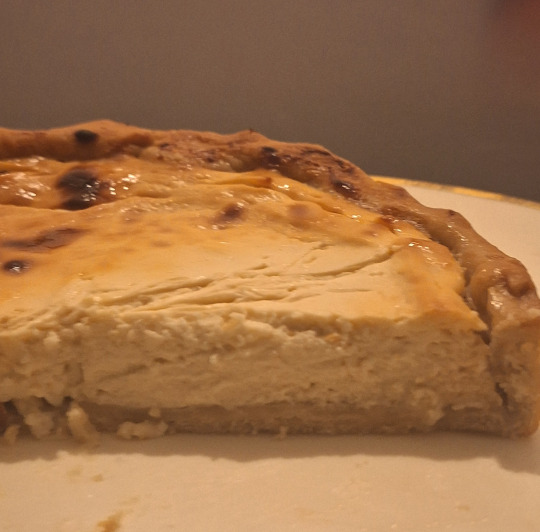
Karunbarono aka Roasted Meat
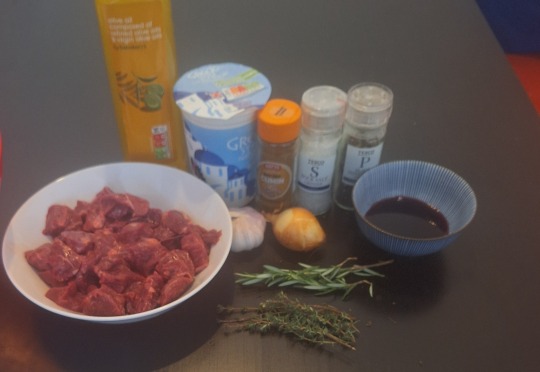
Cooking meat on skewers is a staple of Korithian cuisine, so much so that in certain regions the metal skewers or kartorosi, can be used as a form of currency. Meat is typically cooked over an open fire or on portable terracotta grills, though it is not unheard of to use a large beehive shaped oven or baros. The majority of the meat eaten by the lower classes comes in the form of small game such as rabbit or sausages made from the scraps of pork, beef, mutton, poultry, and even seafood left after the processing of more high-class cuts. The chicken has not yet been properly introduced to the islands, though some descendants of pre-Calamity chickens do exist, though they in most cases have drastically changed because of wild magic. Animals are rarely eaten young, lambs for example are almost never eaten as their potential for producing wool is too valuable. Most animals are allowed to age well past adulthood, except for in special circumstances. The practice of cooking meat in this style is prehistoric stretching back far before Korithia or Arkodai. What is newer however is the practice or marinading the meat before cooking it, this is a Korithian and later Kishite innovation.
Recipe
1 lb Mutton (meat used in this recipe), beef, lamb, venison, or horned-rabbit meat (in order to achieve this it is suggested to use wild hare meat in combination with pork fatback) chopped into bite sized pieces
4 Tablespoons Plain Greek Yogurt
4 Tablespoons Dry Red wine (Any dry red will work, for this recipe I used a Montepulciano d'abruzzo but an Agiorgitiko would work perfectly for this)
3 Tablespoons Olive Oil
4 Cloves of Garlic roughly chopped
1 Small onion roughly chopped
1 sprig fresh thyme
1 sprig fresh rosemary
1 tsp sea salt
1 tsp black pepper
1/2 tsp ground cumin
Gather and measure ingredients
Combine everything into a large bowl and stir, making sure that all pieces of meat are covered in the marinade.
Cover and allow meat to sit, preferably in the fridge for 2 hours or up to overnight.
Well the meat is marinating, if using wooden or bamboo skewers, soak in water for at least one hour to prevent burning.
Preheat the oven to 400 F or roughly 205 C. Or if cooking an open fire, allow an even coal bed to form.
Remove meat from the fridge, clean off excess marinade including any chunks of garlic or onion
Place meat tightly onto the skewers making sure that each piece is secure and will not fall off.
Brush each skewer with olive oil and additional salt and pepper to taste, optionally add a drizzle of red wine vinegar.
Place on a grate either in the oven with a pan below it to catch drippings or else over the fire. Allow to cook for 10-20 minutes depending on how well you want your meat cooked (less if using an open fire) Check every five minutes, flipping the meat after each check.
Remove from the oven and serve immediately.
Pasrosi Diki aka Little Fishes

Despite living by the sea, fish makes up a surprisingly small part of most Korithians' diet. The most valuable fish typically live far away from shore, where storms and sea monsters are a serious threat to ships. Much of the fish that is eaten are from smaller shallow water species, freshwater species, or shellfish. Tuna, swordfish, sturgeon, and ray are considered delicacies, typically reserved for the wealthy. Marine mammals such as porpoise are eaten on rare occasions, typically for ceremonial events. Pike, catfish, eel, sprats, sardines, mullet, squid, octopus, oysters, clams, and crabs are all consumed by the poorer classes. Sprats and sardines are by far the most well represented fish in the Korithian diet, typically fried or salted, or even ground and used in sauces. This particular recipe makes use of sprats. Unlike their neighbors in Baalkes and Ikopesh, Korithians rarely eat their fish raw with the exception of oysters.
Recipe
(Note that unlike modern recipes using whitebait, these are not breaded or battered as this particular cooking art has not yet been adopted in Korithia, though it is in its infancy in parts of Kishetal)
10-15 Sprats (other small fish or "whitebait" can also be used)
2 quarts of olive oil (not extra virgin)
Sea salt to taste
Black Pepper to Taste
Red Wine Vinegar to taste
Gather ingredients
Inspect fish, look for fish with clear eyes and with an inoffensive smell, avoid overly smelly or damaged fish.
Pour olive oil into a cast iron skillet or other high sided cooking vessel and heat to approximately 350 F or 177 C.
Fry the fish in batches of 5, stirring regularly to keep them from sticking. Cook for 2-4 minutes until the fish have started to crisp. Be careful, some fish may pop and spit.
Remove fish from the oil and allow them to drain.
Season fish with salt, pepper, and vinegar and serve.
Psampisa aka Flatbread
There are many varieties of bread eaten in Korithia and grain products make up anywhere from 50 to 80 percent of an average individuals diet. This particular variety of bread is most popular in the southern and eastern portions of Korithia, whereas a fluffier yeasted loaves are more commonly eaten in the west and north. This recipe is specifically made with wheat but similar breads can also be made with barley or with mixtures. If you do not want to make this bread yourself it can be substituted with most pita breads. Bread is served with every meal and some meals may feature multiple varieties of bread.
(Note for this recipe I only had self-raising flour at hand which gives a slightly puffier bread, if this is what you want add roughly 3 tsps baking powder)
Recipe
2 1/2 cups white wheat flour plus more for surface
1 1/2 teaspoons sea salt
1 cup whole fat greek yogurt
Olive oil for cooking
In a large bowl, mix together the flour, salt and baking powder. Add the yogurt and combine using a wooden spoon or hands until well incorporated
Transfer the dough to a lightly floured surface and knead by hand for 5 minutes until the dough feels smooth.
Cover the dough and allow to sit for approximately 20 minutes
Separate dough into desired number of flatbreads.
Add flour to each dough ball with your hands and then use a rolling pin to flatten out the dough on a lightly floured surface. Size is up to taste.
Heat a pan on medium high heat. Add the olive oil and cook the flatbreads one at a time for about 2-4 minutes, depending on thickness, per side until the bread is puffed and parts of it has become golden brown.
Akuraros aka Cucumber (Salad)

While the cucumber has become a relatively popular crop within Korithian agriculture it is not native and was all but unknown to their Arkodian predecessors. Cucumbers, which actually originated in Sinria and Ukar, were introduced by Kishite invaders during the Arko-Kishite war and were subsequently adopted by the survivors of that conflict. Cucumbers are associated with health and in particular with fertility. Cucumbers are typically eaten raw or pickled. They may be used in salads or even in drinks, ground into medicinal juices. Cucumbers are additionally believed to ward off disease carrying spirits and may be hung outside of the doors of sick individuals to ward off evil entities. Cucumbers are also fed to learning sages, as they are believed to strengthen the resolve and spirit. A potion consisting of the magical herbs wumopalo and lisapalo, wine, and cucumber juice has historically been used to temporarily induce in non-sages the ability to see spirits. Dill is additionally believed to produce positive effects, thought to ward of diseases of the stomach and cancers. Dill is often used in potions which may effect the physical nature of an individual, these potions are rarely used as their effects are most often permanent to some extent.
This particular cucumber salad recipe is a favorite in the region around Kalmanati, Bokith.
Recipe
1 large cucumber cleaned
2 cloves garlic roughly chopped
2 tablespoons fresh dill chopped
1/3 cup red wine vinegar
1/4 cup extra virgin olive oil
Salt to taste
Pepper to taste
Cumin to taste
Cut cucumber into thin slices (the actual width will vary dependent on taste)
Combine cucumber and all other ingredients in a non-reactive container and mix.
Cover and store the salad for at least 30 minutes and up to 12 hours.
Serve cold
Ewisasi aka Olives

The Ewasi or olive is in many ways the center of Korithian cuisine, as it is also in Baalkes and Knosh. Olive oil is used regularly and the olive fruit is consumed at all meals of the day including dessert. Olives are cured via the use of water, vinegar, brines, or dry salt in order to remove their innate bitterness. There are hundreds of varieties of olive in Korithia alone, their taste dependent on when they are harvested, how they are cured, the particular cultivar, and even the soil in which they are grown. Kalmanati is best known for two varities of olive, the kalmi, which is red fleshed and meaty, typically cured in red wine vinegar, and the prasiki, a small green olive which is firm and slightly nutty in flavor.
Recipe
Take your favorite olives, put them in a bowl. Optionally add vinegar and herbs
Funemikiwados aka Hill Sauce
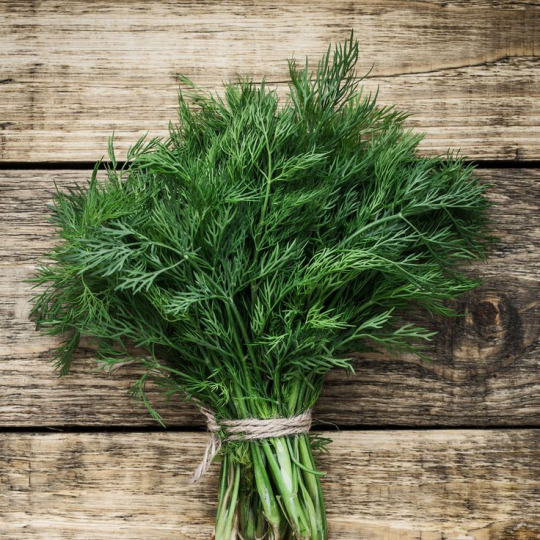
Hill sauce is the condiment of choice for most Korithian households and the exact nature of the sauce will vary greatly from region to region. In the north it is most often composed of pine nuts, olive oil, onion, vinegar, salt, and garlic. In the south the sauce is typically far more marine in nature, composed of seaweed, fish, garlic, olive oil, and vinegar. In all cases the ingredients are combined and mashed or ground to produce a pourable/dipable sauce. The sauce itself originates from the center of Korithia around the city of Bokakolis. The sauce was originally used by shepherds to flavor dried meats which may otherwise be dry or flavorless. Its name derives from the ingredients used within these early versions of the sauce, many of which were herbs plucked from the hillside while the shepherds tended to their flocks. The Kalmanatian version of the sauce is similar to this original herb based variety however it adds salt-cured fish and tisparos (Tisi - tickle, paros- seed) , another Kishite import (there it is called lisiki). This sauce is often used with practically any savory food, poured on meat, fish, vegetables, and bread. Often a house may be judged by the quality of their funemikiwados. Among the Kalmanatians there is two varieties of the sauce, a fresh version (the one described here) and another which is typically made with dried herbs and has additional vinegar added to act as a sort of preservative.
Recipe
1/2 cup extra virgin olive oil
1/3 cup red wine vinegar
2 tbsps rilogabo juice (1:1 orange and lemon)
2 anchovies (or other small salt-cured fish)
1/4 cup fresh chopped dill
1/6 cup fresh chopped parsley
1/8 cup fresh chopped thyme
6-10 leaves of fresh chopped rosemary
2-3 leaves fresh basil
2 cloves of garlic
Black pepper to taste
Ground tisparos to taste (Substitue ground sichuan pepper)
Gather the ingredients.
Combine and grind anchovies, garlic, and herbs into a fine paste, using a mortar and pestle or with a food processor.
Combine the herb paste ialong with the rest of the other ingredients and mix until completely incorporated.
Allow to sit at least 30 minutes, allowing for flavors to develop and properly incorporate with each other.
Serve with meat or fish
Wumos aka Wine
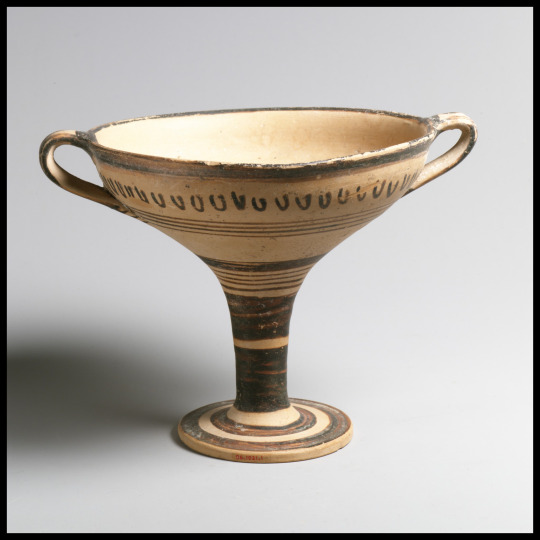
Wine in Korithia predates both the Korithians and the Arkodians, and had already been developed by several cultures on the islands including the Awaxi mentioned earlier. Wine is one of the most commonly consumed beverages, only surpassed by water, and slightly more common than psamarla, a Korithian version of unfiltered beer. Wine has many social, religious, and economic uses and is essential in the trade of the plantbrew, making up the base of many kinds of potion. There are many varieties of wine, with some being viewed as better or worse than others. Red wine is typically preferred for later in the day as it is believed that it helps to induce sleep while white wine is preferred for the morning and afternoon. Wine is typically watered down at a ratio of 2 parts water to 1 part wine, this may be either with plain or salted water. Unwatered wine is saved for special occasions and certain religious ceremonies in which intoxication is the goal. Wine may be sweetened with honey, figs, or various fruit juices. Herbs and spices such as black pepper, tisparos, coriander, saffron, thyme, and even cannabis and opium and various magical herbs may be added to change the flavor of the wine and to promote other effects.
Recipe
Pick a wine that you like and put it in a glass or cup. You can water it down if you would like but I didn't because I am not Korithian and this was a special occasion.
I finally got this post done! If you decided to read through this whole thing, thank you! Let me know if you try any of these, most of these amounts are ultimately a matter of taste, you can change things and experiment if you want.
Now we'll see if I get to 300 followers and we'll do this all over again with the food from another part of the Green Sea.
Thank you all again for following me, I've really enjoyed sharing my WIP with y'all!
@patternwelded-quill , @skyderman , @flaneurarbiter , @jclibanwrites , @alnaperera, @rhokisb, @blackblooms , @lord-nichron , @kosmic-kore , @friendlyshaped , @axl-ul , @talesfromtheunknowable , @wylanzahn , @dyrewrites , @foragedbonesblog , @kaylinalexanderbooks , @mk-writes-stuff , @roach-pizza
#fantasy food#writeblr#writing#worldbuilding#fantasy#testamentsofthegreensea#fantasy writing#world building#creative writing#story writing#200 followers#thank you guys so much!#fantasy world
76 notes
·
View notes
Text
ANOTHER NABIU OC!
Thus continues in from my last post!
I shall introduce to you-

ARTI, THE MAIN HERO MAGE!
They are an mute non-binary Artichoke!
Imagine basically an good mute Protagonist who saves kingdom's and people, does Quests, bonds with teammates and has an born mistake which is the way the face is formed.
They are usually rather calm and composed, trying their best to prove for the people even when they don't talk.
It basically is the teammleader of the hero team, acting with them and even taking Karoto in when he was Injured.
Arti also while Karoto was in thr team was basically the only parental figure for him...he found out that he wanted to betray them by an old betrayed teams conversation.
He confrontation lead to him sadly leaving through team....by leaders orders, because they weren't sure if Karoto could be trusted.
In the end, they continue to go trough the land, simply dealing with problems together with their teammates.
Arti just wants a good journey.
9 notes
·
View notes
Note
Sera 🌙💙 "writing found in your OC’s trash can" for Garrett? 😶🌫️
Sciau 💜⭐️
Ok, I went for the sappy option, what can I say.
He tried! ⭐️
Tis the prompt list
3. writing found in your OC’s trash can
a crumpled note, unfolded and carefully smoothed down. It was torn in two, but the tear isn't in a place where it will make reading difficult, if one had a mind to it. It can be read, in a sharp calligraphy written by a heavy hand that pressed on the paper much:
Roses are red
Violets are blue-
Violets are purple, that's a stupid metaphor.
What is blue?
Blue things:
Sea
Sky
Too short, it needs two syllables. Poetry is hard, that's on me for listening to Isabela.
Bluebells I already put roses in the first verse, it's enough flowers?
Lyrium markings Maybe not these?
Mondays
(Grey) Wardens No that's even worse.
Spirits?
Roses are red
Spirits are blue
Pumpkins are nothing
If compared with you.
Roses are red
Wardens are blue
I'd travel anywhere
if I could go with you
Roses are red
Your markings shine blue
They aren't as bright
As-
The rest of the verse is scribbled out and unreadable
This is unbelievably stupid he'll laugh of me and not in the way I'd want him to laugh.
Scrap it, if he wanted a poet he should have gotten with Raina anyway. It's gonna be a bouquet of artichokes as I intended. No poetry.
#oc codex prompt#garrett hawke#fenhawke#He considered asking a demon but it was very busy weeding the pumpkin patch#and he felt sorry to interrupt such a good work#writing petrel
8 notes
·
View notes
Note
for the ask game (whichever ones you want to answer):
Top 5 vegetables
top 5 story ideas you wish you had time to write
top 5 places you’d like to visit
top 5 wtf moments your favorite OC got into
ugh i want to answer ALL of these, but the first is just so deeply compelling. i love veggies, so it's hard to pick, but i have done my best:
artichoke
gai lan
ramps
shishito peppers
lima beans
as for top 5 story ideas i wish i had some time to write, here are some longfic ideas i have floating around in my head. some i've had for over a real long time now. they're fun to toy with, to roll over in my mind until they're smooth like a river stone.
a babylon 5/mdzs crossover with telepaths and songxuexiao, with xue yang being a telepath who is on the run and song lan as a psi corps cop tasked with tracking him down.
a deeply intricate post ca:tws winterhawk story where clint is holed in in a safehouse somewhere and bucky hunts him down and asks for his help in exchange for information on phil coulson's whereabouts. loops in some early agents of shield stuff and is kind of an around-the-world casefic.
currently i'm toying with the idea of a x-files au where krycek runs into mulder in a bdsm club. some horrible things ensue.
a very strange omegaverse (i don't even really like omegaverse) fma:b au where roy is a late-presenting omega and edward is an alpha. i feel like this would mostly just be self-indulgent identity misery more than it would ever be porn.
i have a kylux scp!au partially written. i think about it sometimes, bc i love the vibe (no one is having a great time) and the universe (so spooky, so strange, so governmental) so much.
[ask me my top 5 anything]
7 notes
·
View notes
Note
veggie Anon here I was asking because an oc of mine is named Artichokepaw and I have no clue how’d that translate. The clan probably knows about veggie varieties because of nearby barn cats who have them
In that case, feel free to just approximate 'artichoke' into Clanmew!
"Abashowk"
There isn't a term for artichokes in Clanmew because the Clans don't encounter them, but Barn cats who are mimicking what humans call the crop can share the word they have!
Feel free to contract a word for it, too. Soil Stone Fruit = Pepa Bon Praw = Peboraw.
27 notes
·
View notes
Text

look at him. the littlest guy. so normal and not a weird thought in his head
#the sillyyyyyy#i want to squish her into a puddle it's so dire#anyway. last-minute artfight refs are going well but my brain is starting to shrink from the oc brainrot#i think i'll have to go work on my months-late assignments soon. just to not go completely insane#.artichoke#cqralt#dante
1 note
·
View note
Text





I did a Drawpile session with @dom-puyo and these are most of my creations
The green hair character is an OC and his name is Artichoke
#my art#drawpile#launchpad mcquack#scrooge mcduck#disney#ducktales#ducktales art#dt87#dt 17#ducktales 2017#ducktales 1987
14 notes
·
View notes